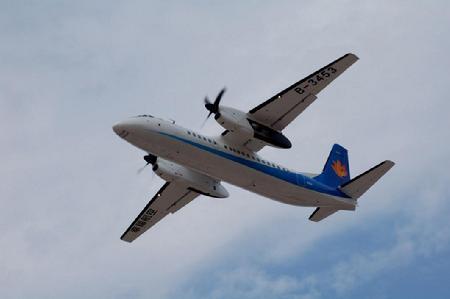
Senior members of the Chinese civil aviation community have highlighted a series of challenges that the development of domestically built civil aircraft must contend with, ranging from airspace policies to economies of scale.
Speaking on a panel at China’s annual Two Sessions—the meeting of the National People’s Congress and the Chinese People’s Political Consultative Conference—Chinese Academy of Engineering member Tang Changhong and AVIC Optronics member Yang Yi both said the country’s domestic aviation network was far behind those in North America and Europe, despite the maturity of trunk routes in the country.
In 2019, regional airports only accounted for 6.8% of all passenger throughput in China. Meanwhile, regional aircraft only accounted for 5% of the country’s total aircraft fleet, suggesting under-utilization of regional airport networks.
Although the government introduced subsidies for regional aviation in 2013, the officials said 90% of the proceeds had been spent on foreign “mainstream” commercial aircraft like the Boeing 737 and Airbus A320. These aircraft proved too large for regional routes and led frequencies to be lowered and some feeder routes dropped altogether, countering the original intention of the program.
Domestic aircraft, especially the Xian MA60 turboprop family, have faced growth challenges as feeder routes have yet to mature, making them unprofitable to fly. The MA60 “cannot be considered as a success,” Yang said. Without scale, it is relatively expensive and difficult to source and train pilots, technicians and support staff for MA60 operations. In other words, the aircraft has not attained any competitive advantage over its Western counterparts.
Aviation Week Intelligence Network Fleet and Data Services shows there are only 25 MA60s in civil operation in China.
Large-scale operation of the MA60 and COMAC ARJ21 will be key to the future of regional flying in China, the panelists said. They suggested that regional aviation subsidies be revised to favor the MA60 and ARJ21, which could be done by increasing the rebate 1.5 times.
In a separate session, China Eastern Airlines chairman Liu Shaoyong submitted a proposal that called for the liberalization of air rights, particularly for domestic-made aircraft, and the creation of a tax-support policy, such as fee subsidies. He also suggested encouraging provincial governments to support infrastructure development for domestic aircraft systems and the promotion of regional routes.
Lastly, he said the creation of a robust services and technical support network for domestic types was needed. This would allow the aircraft to venture further afield to other regions and eventually overseas stations with the guarantee of spares and on-site support.


